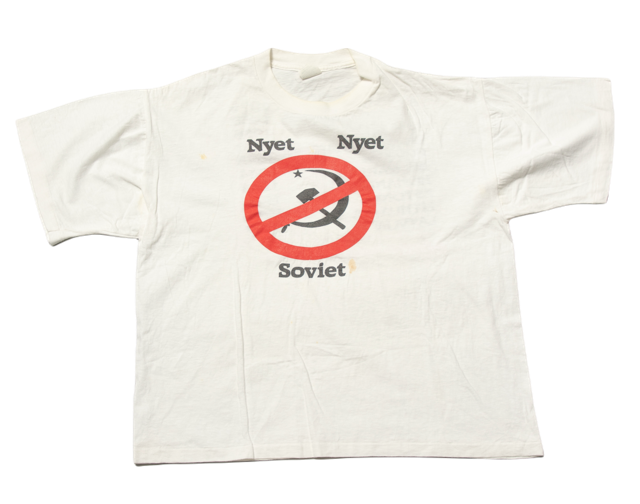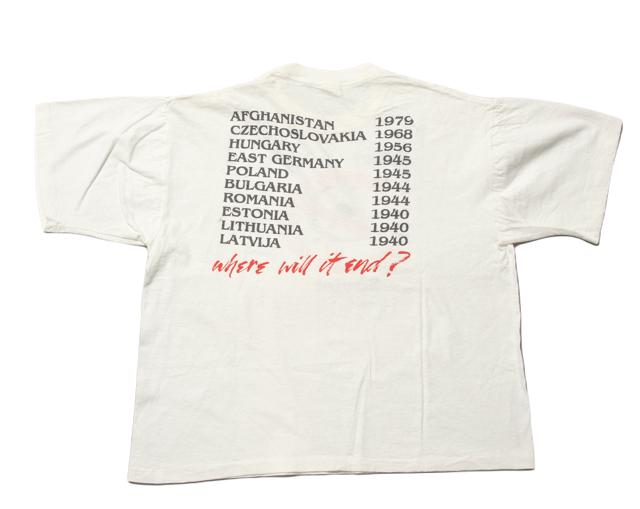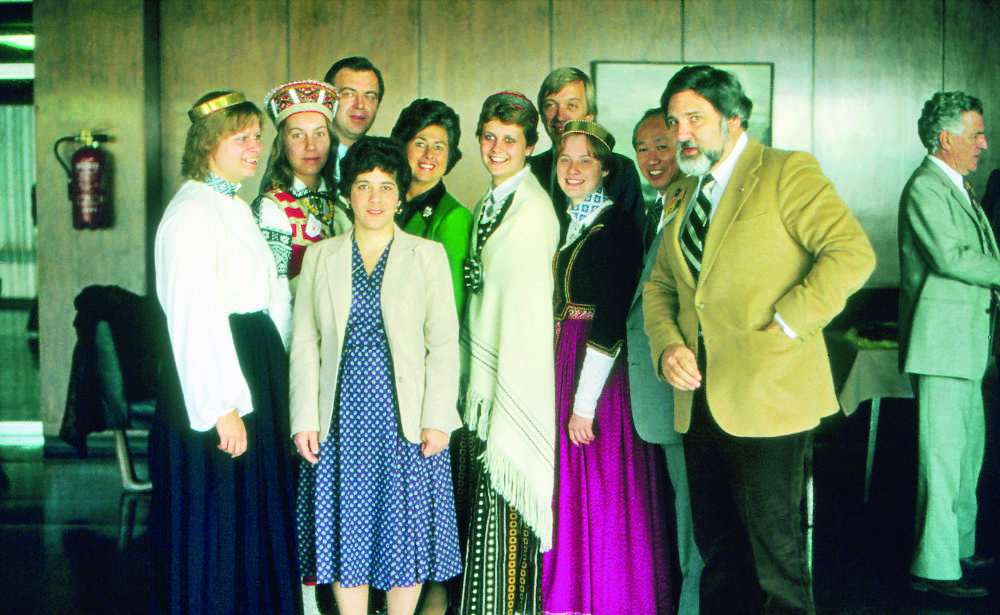- Latvian political activity in exile
- Use your imagination
- Create a catchy slogan
- Gather like-minded people
- Disturb societal norms
- Act quickly
- Get attention from the press
- Protest day-to-day
- Be prepared for legal consequences
- Teach the young
- What to wear
- Remain vigilant until your goal is achieved
- __________________
- About the exhibition
What to wear
BE BRIGHT AND NOTICEABLE!
Visual effects are important in demonstrations. They attract attention and create the overall impression of the event. The easiest way to create an eye-catching effect is to take a T-shirt and paint it in bright colours. Specially made T-shirts and themed costumes also help.
T-shirt “Nyet, nyet, Soviet”
Slogan “Nyet, Nyet, Soviet”
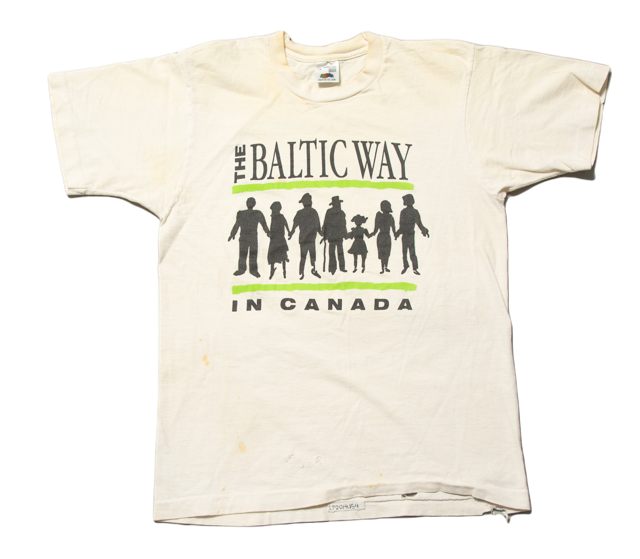
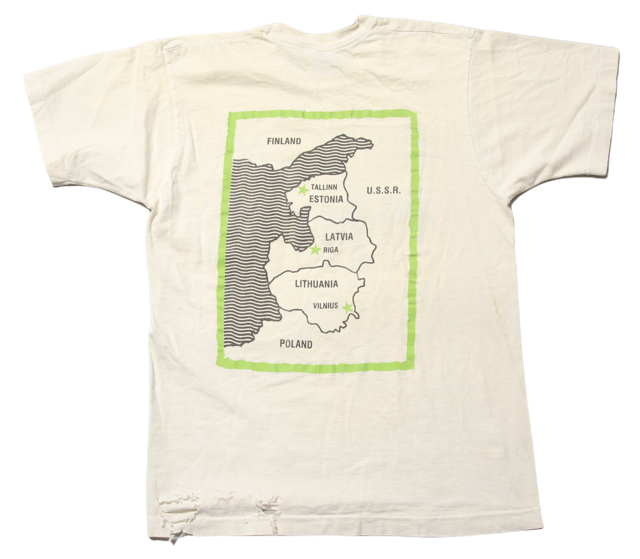
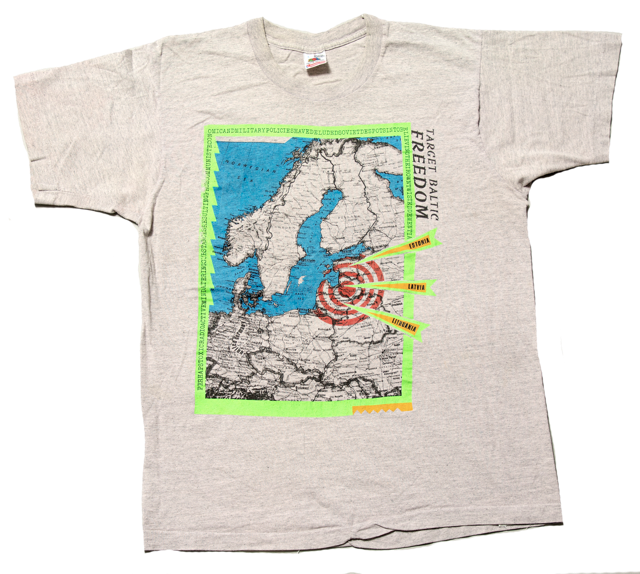
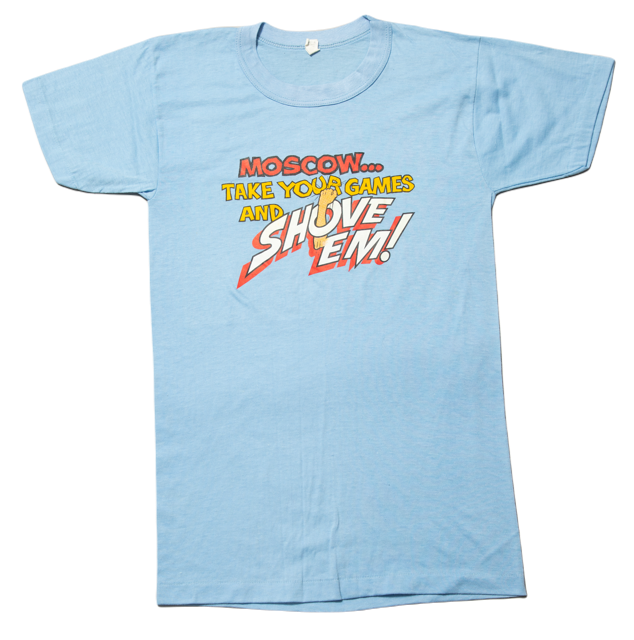
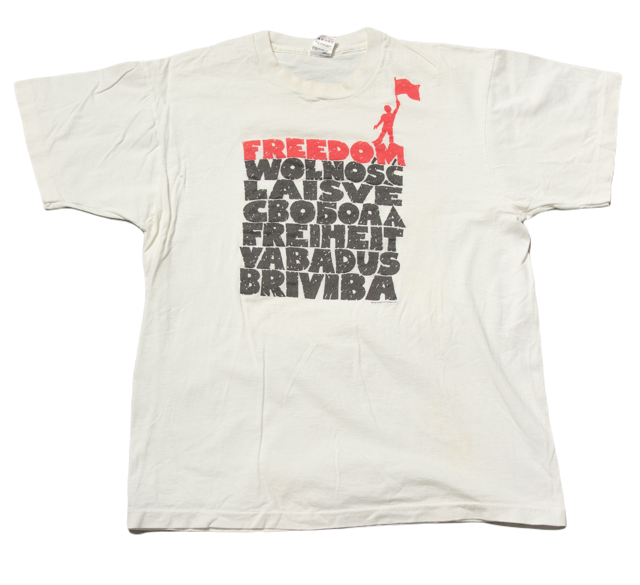
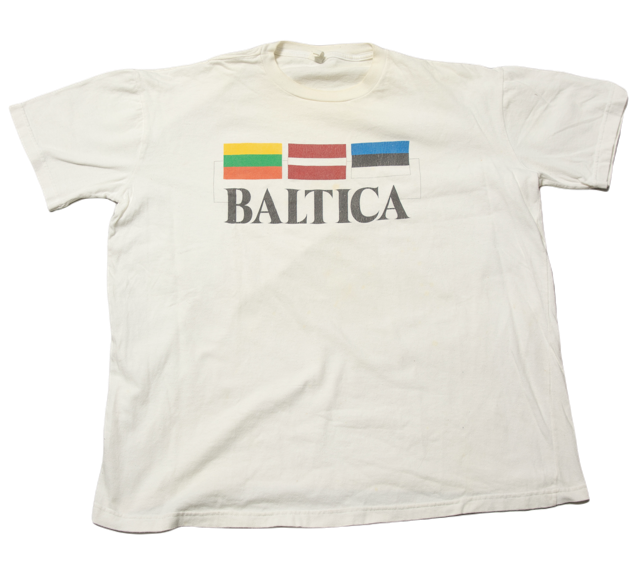
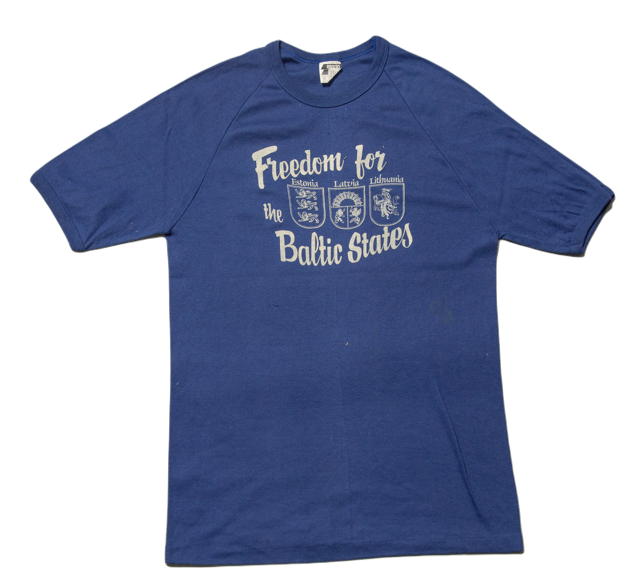
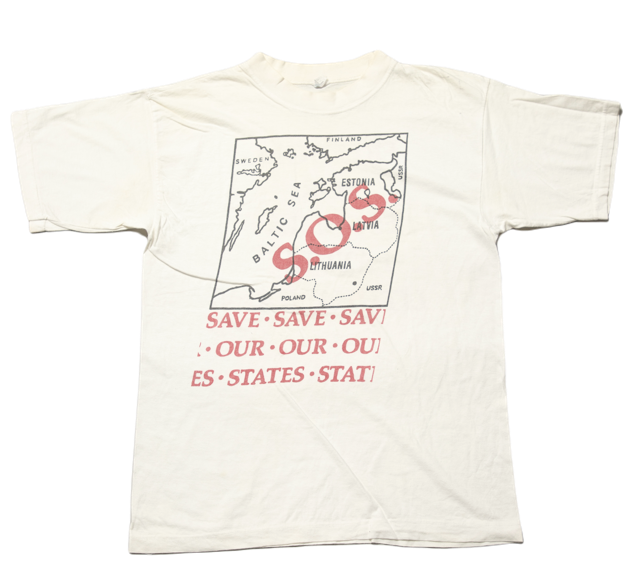
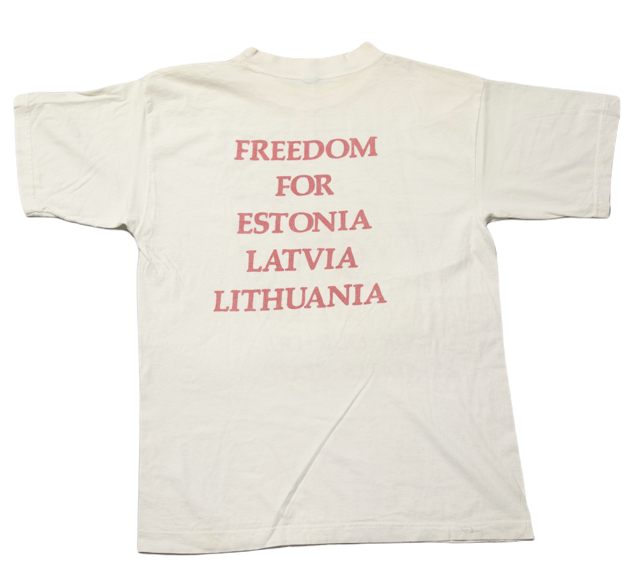
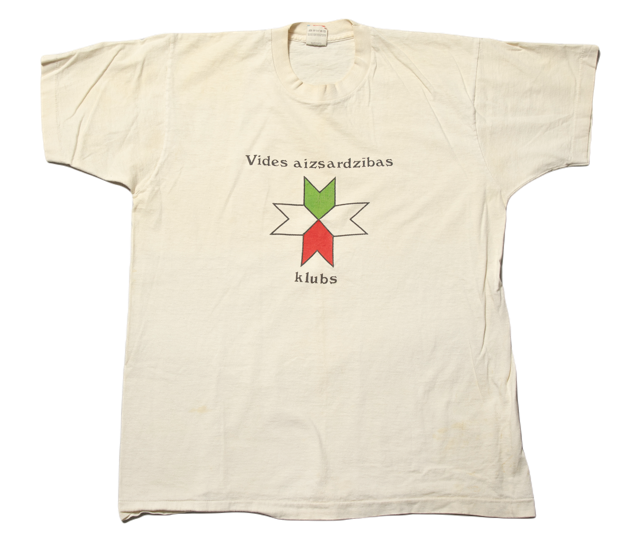
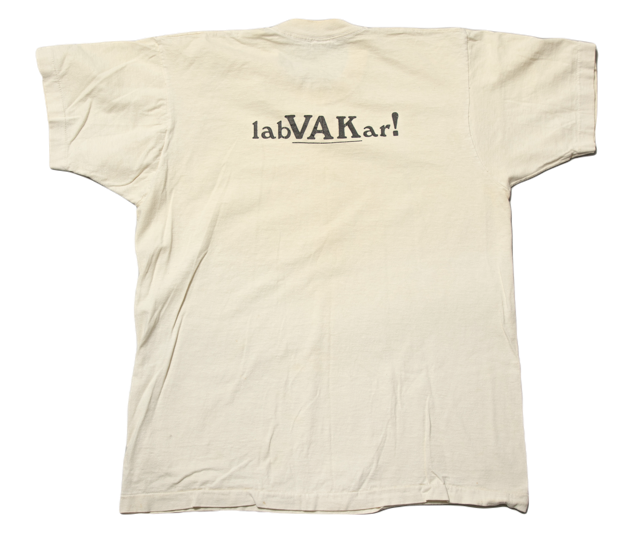
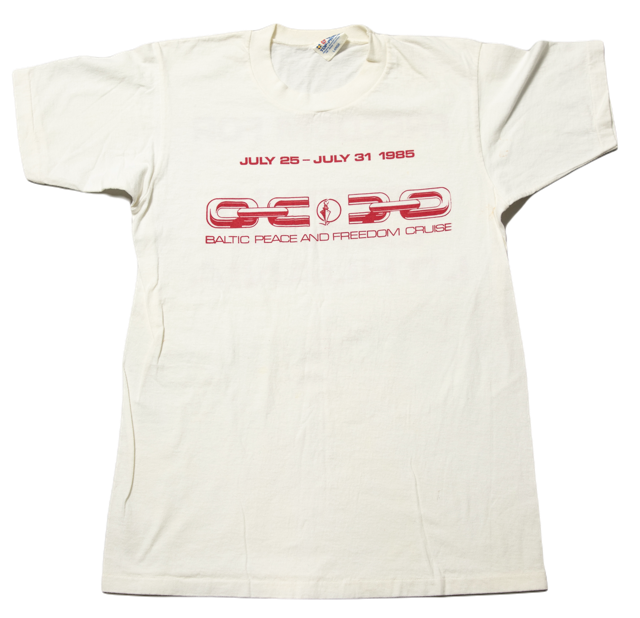
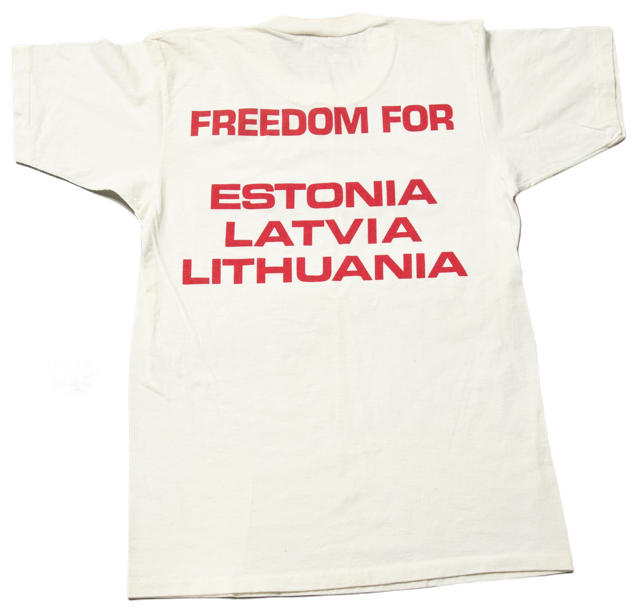
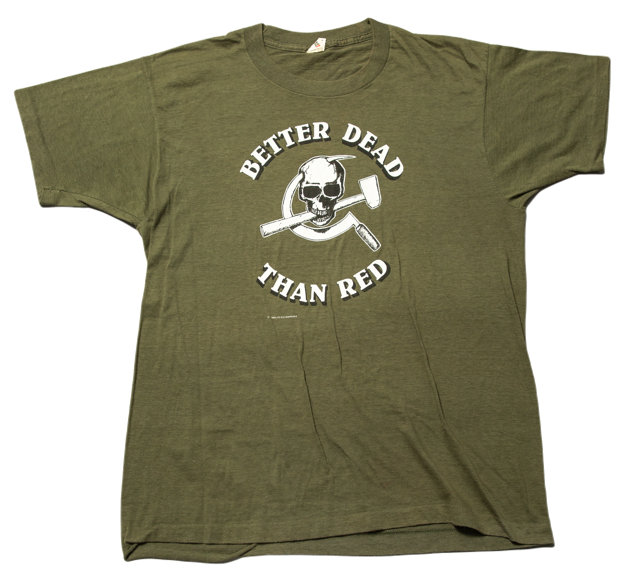
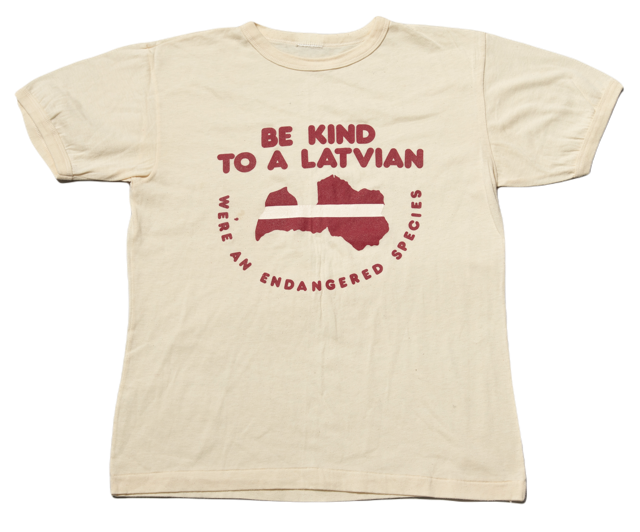
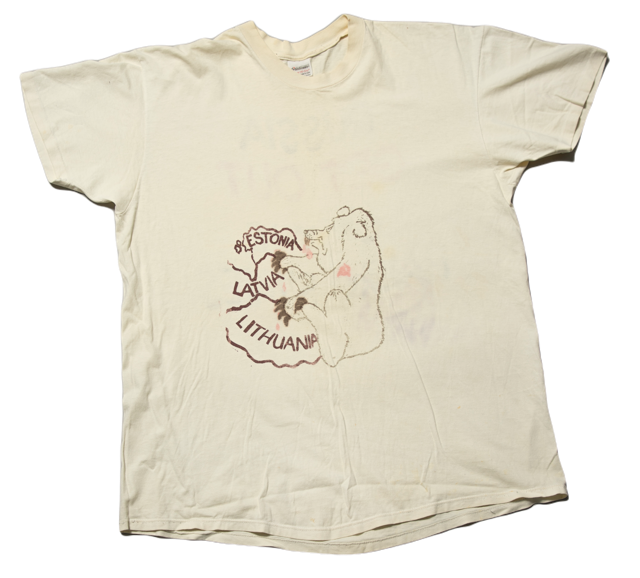
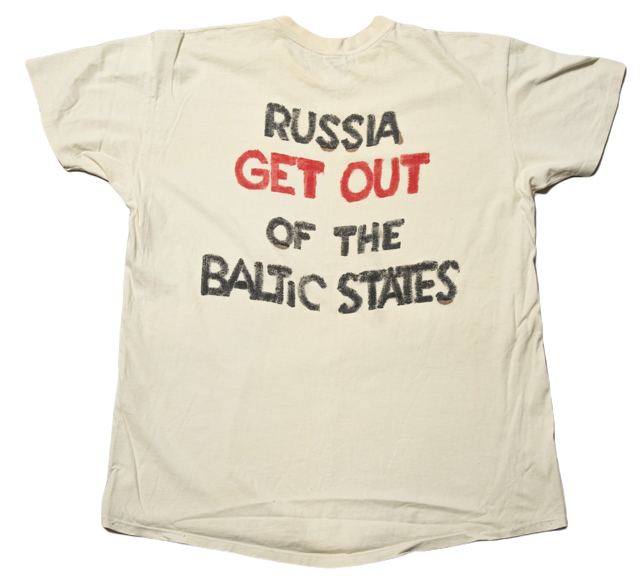
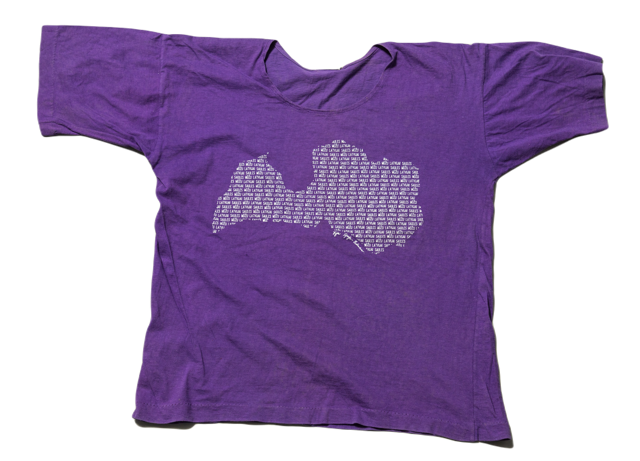
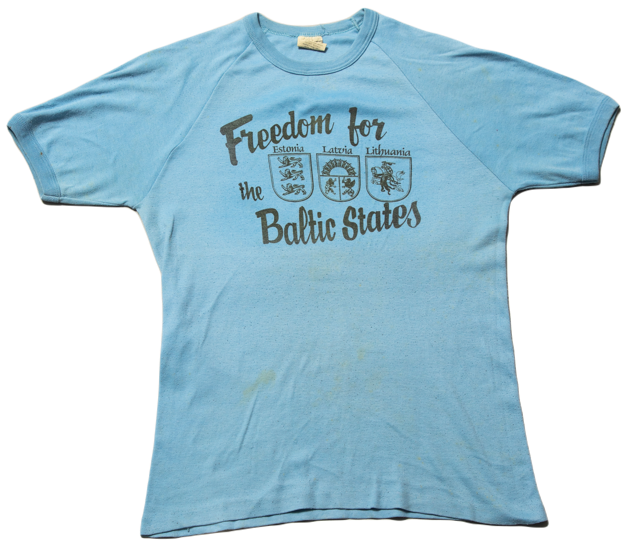
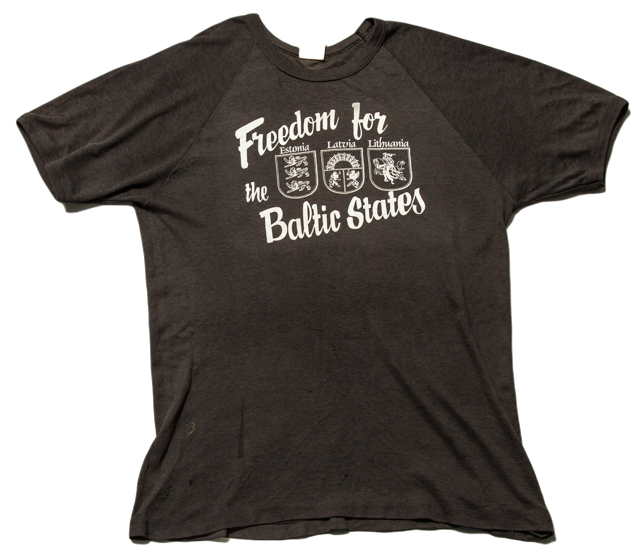
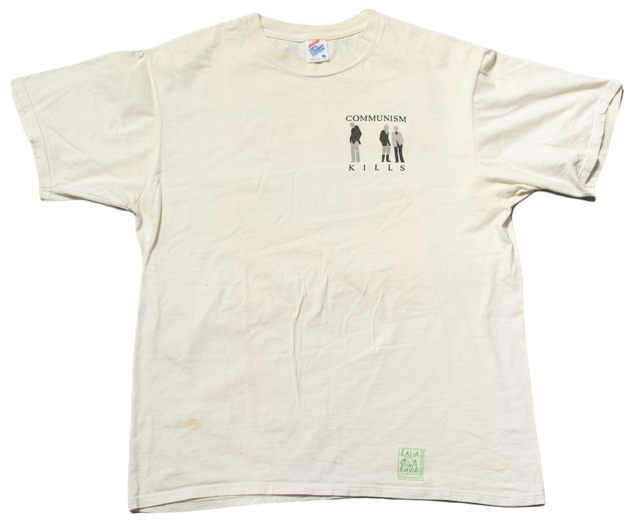
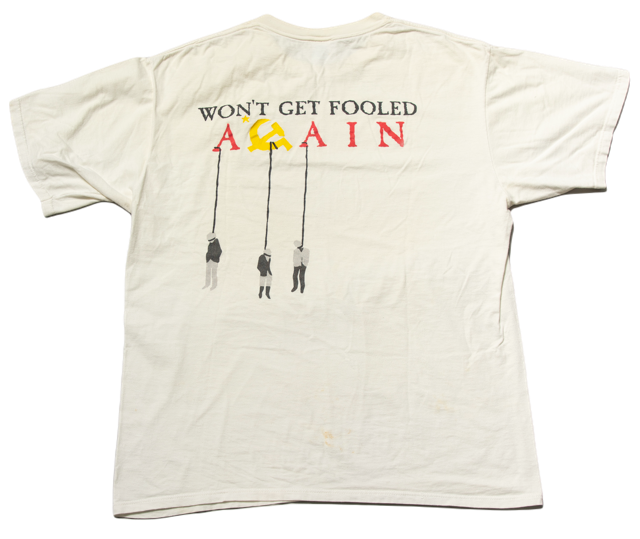
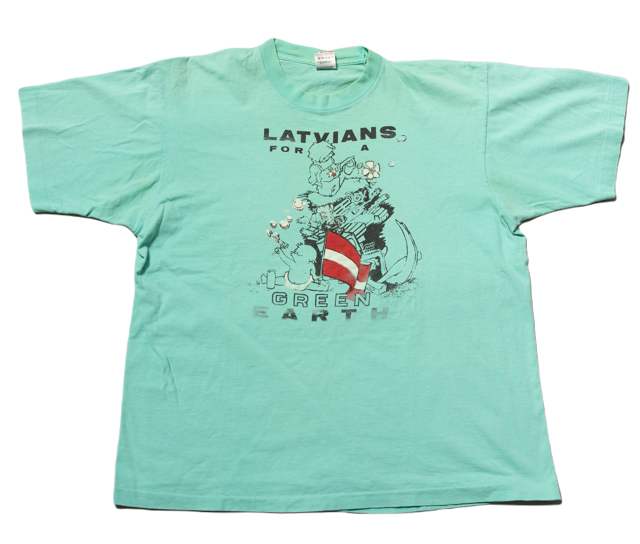
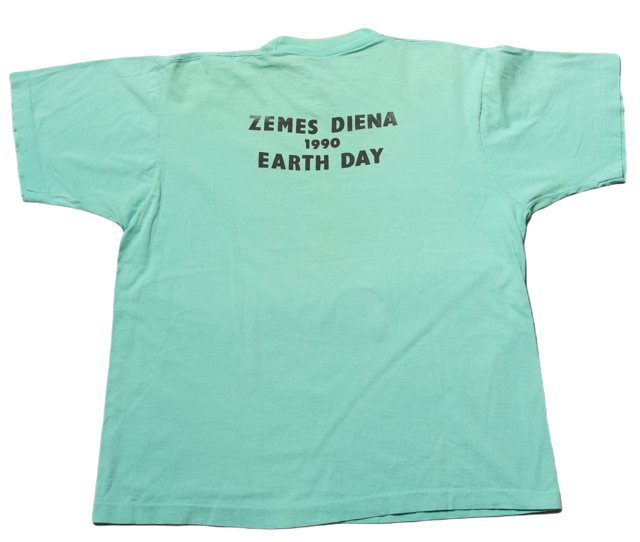
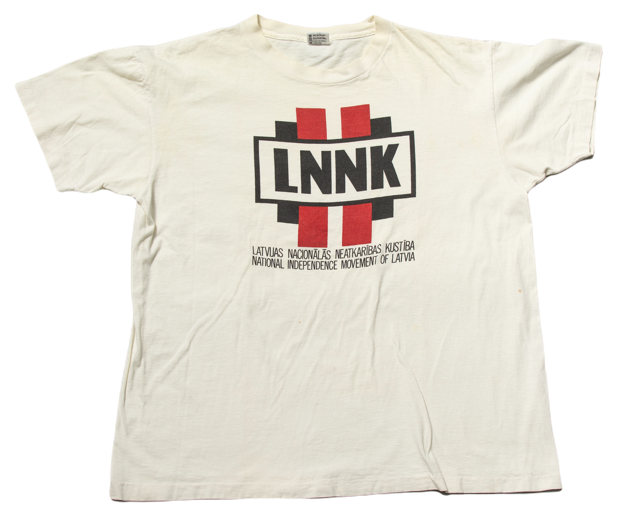
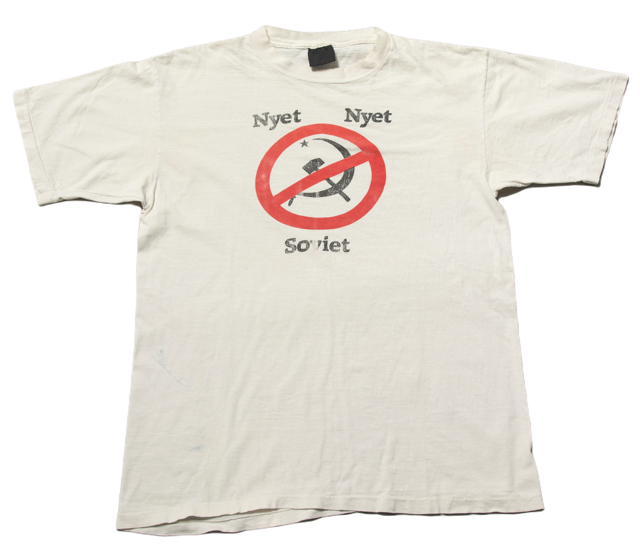
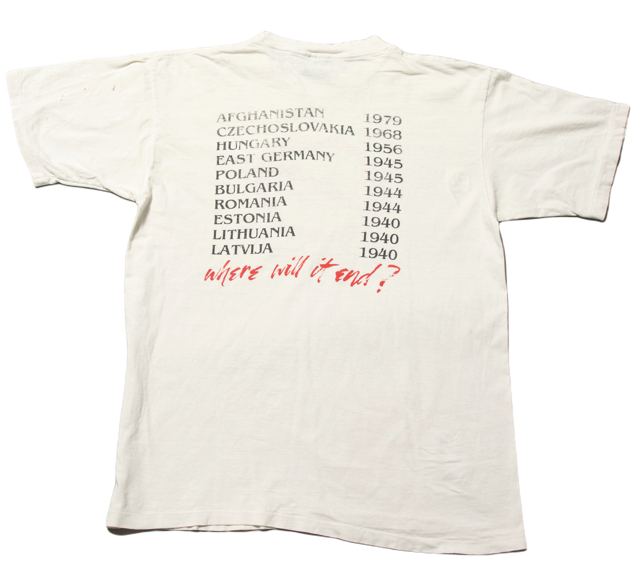
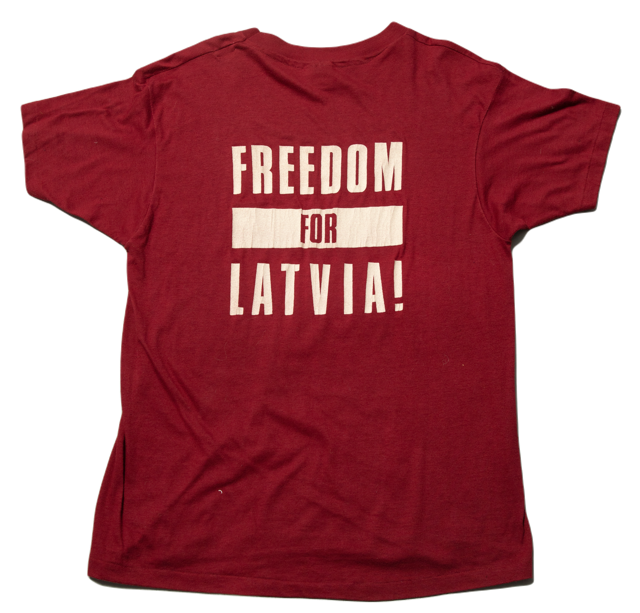
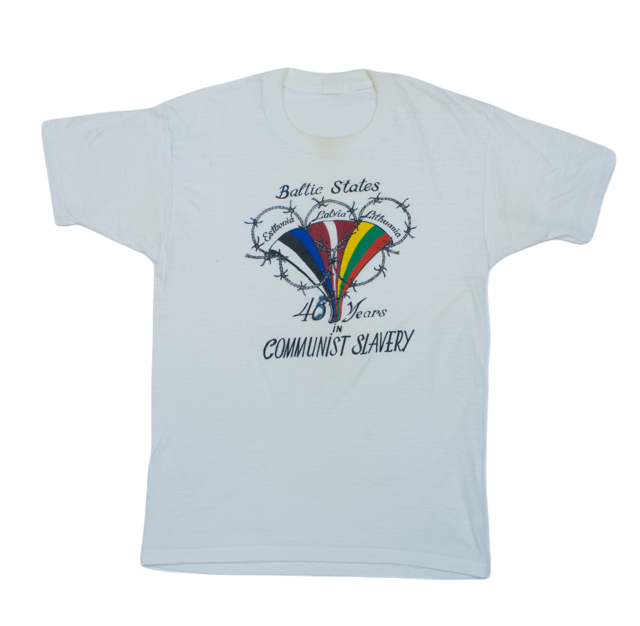
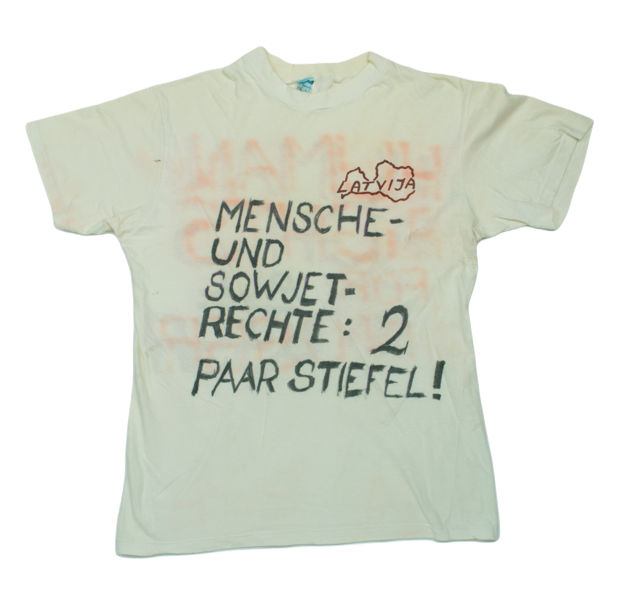
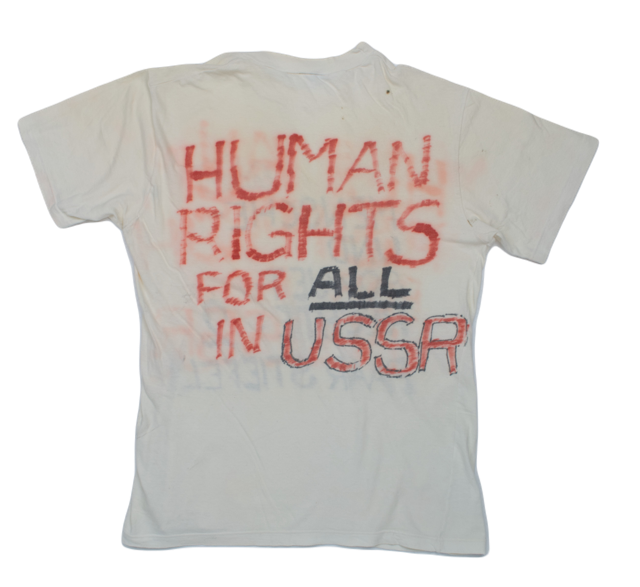
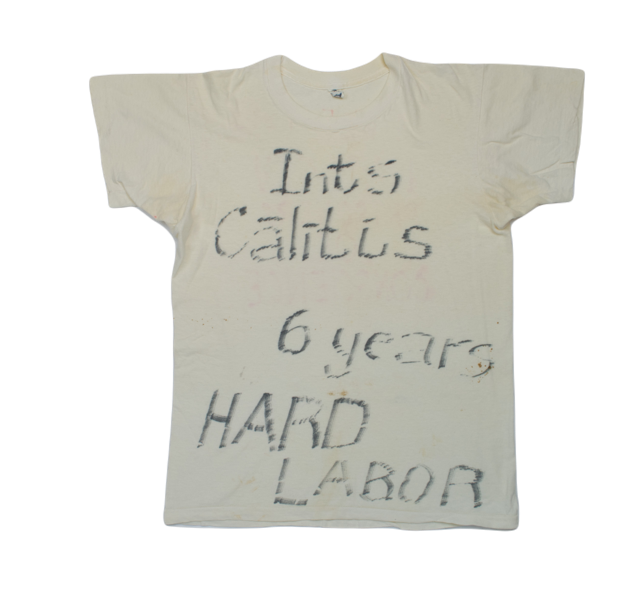
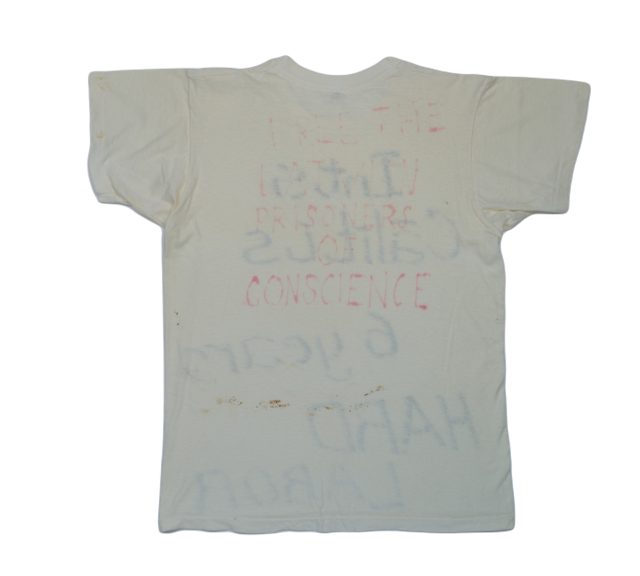
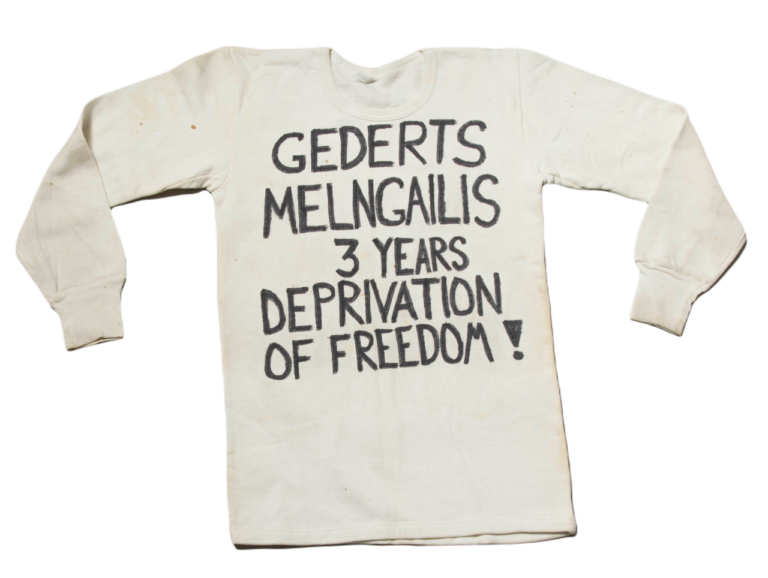
T-shirts worn around the world from the early 1980s and early 1990s. Donated to Latvians Abroad Museum and Research Centre by Marianna Auliciems, Rolands Blezūrs, Verners Cinis, Baiba Bredovskis, Vanda Dauksts, Jānis Grāmatiņš, Zigrīda Francis, Ingrīda Mazutis, Solveiga Miezītis, Māra Newsome-Sātiņš, Lilita Zaļkalns and Lauma Zvidriņš
Latvian national dress in demonstrations
We wore our national dress and walked in front of all the delegates, demonstratively taking the long way. Of course, the place was full of the press.Then we climbed up to the gallery. The press immediately ran after us! Who are you, what are you wearing, where are you from? Then, so we would not disrupt the session, we were told to leave. Our picture was on the front page of the Spanish newspapers.
Aija Abens
I remember that my national dress was ideal: we were colourful and highly visible amongst all the others in grey suits, so the journalists really wanted to interview us. I also remember that our brooches made the metal detectors go off, which also caused alarm and drew attention.
Ingrīda Zemītis


